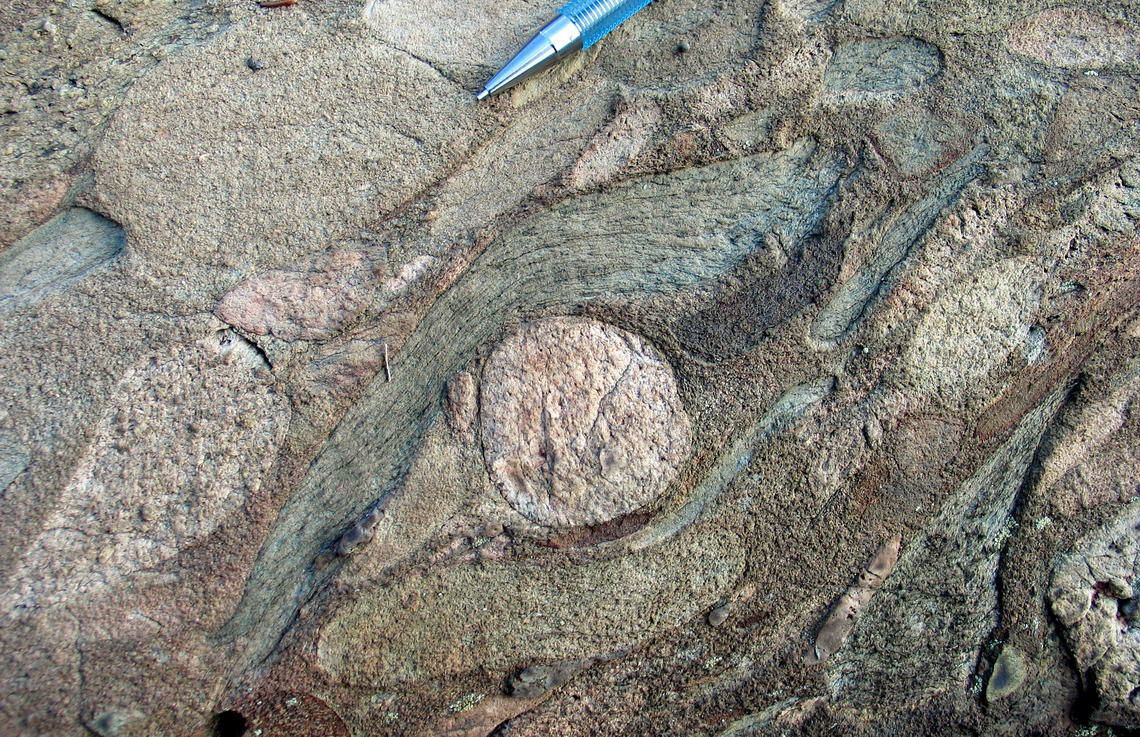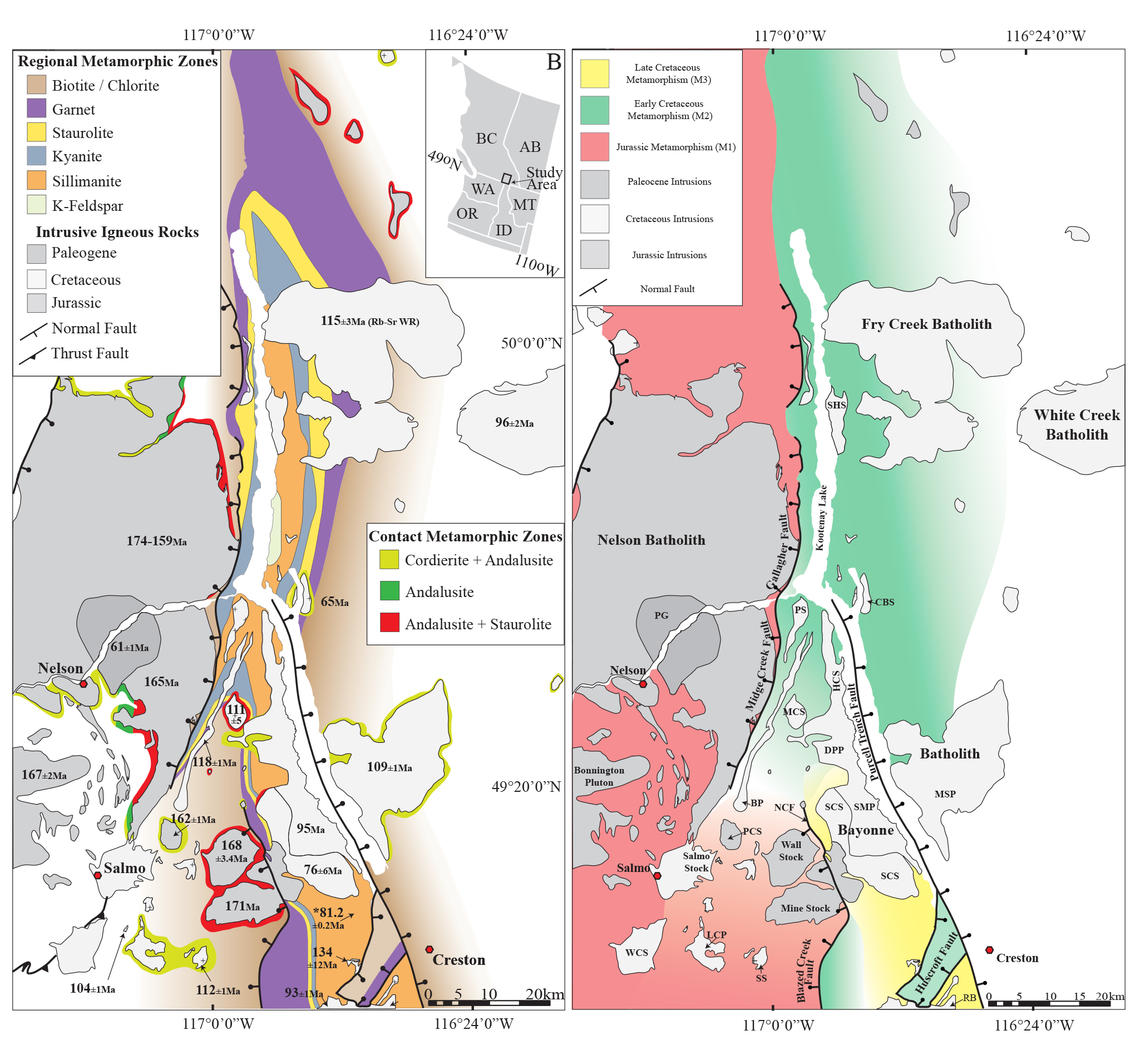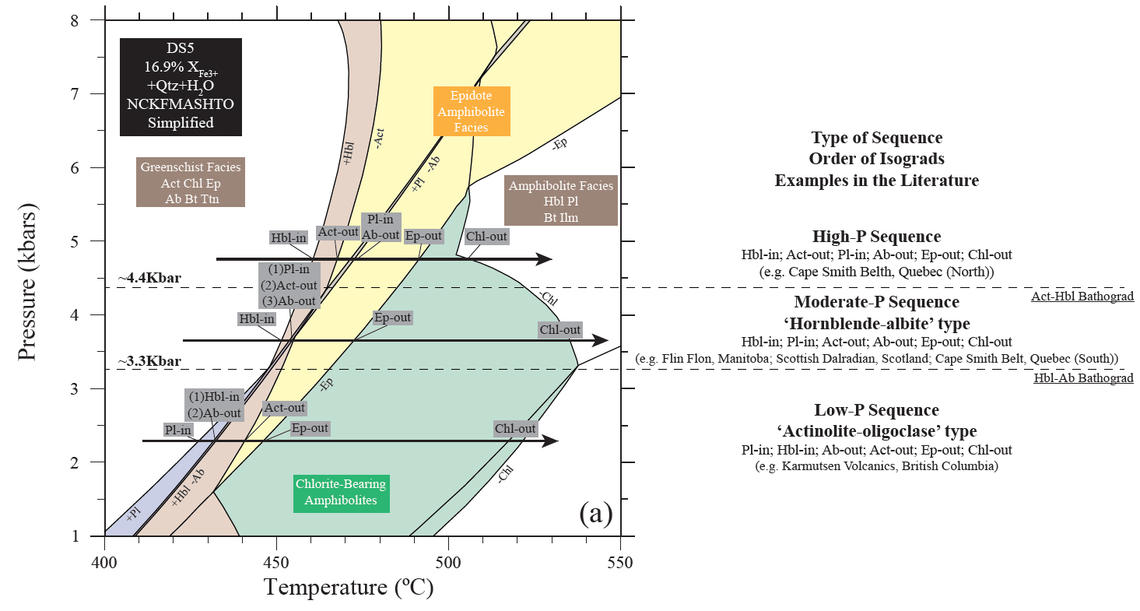Research Interests and Expertise
Metamorphic geology
My students and I are interested in metamorphic geology and what it can tell us about broader problems in Earth Science.
Metamorphic geology is concerned with:
(1) the ways in which rocks change in response to variations in depth, temperature and fluid movement in the Earth's crust and mantle,
(2) the time scales over which these changes occur, and
(3) the underlying geochemical and tectonic processes that control these changes.
Metamorphic geology is used to:
(1) understand ancient mountain building and other plate tectonic processes,
(2) decipher the thermal evolution of the Earth's crust and mantle from 4 billion years ago to the present,
(3) understand how ore deposits have been formed or modified by metamorphism, and
(4) provide constraints for geophysical studies of the unexposed crust and mantle.
The specialized areas of metamorphic geology that I am interested in include:
(1) phase equilibria, especially of metapelites (metamorphosed mud-rocks) and metabasites (metamorphosed basaltic rocks),
(2) the interplay between equilibrium and kinetics in metamorphic processes,
(3) contact metamorphism around igneous intrusions, and
(4) metamorphosed ore deposits.
Some current topics I am working can be found here.
Applications of metamorphic geology to Earth Science:
Metamorphic geology is especially interesting when brought to bear on broader structural, tectonic and ore-related problems in collaboration with other researchers. Over the last couple of decades, my students have helped illuminate the tectonic evolution of the Omineca belt of the southern Canadian Cordillera in southeastern British Columbia through their metamorphically-focused studies, as synthesized in a recent field guide and overview of this region.
Go to my graduate students webpage to see the range of problems in Earth Science that are currently being addressed by the application of metamorphic geology. If you are a potential student, go to my research opportunities webpage to see some ideas for new research.
My research program is mainly funded by the Natural Sciences and Engineering Research Council of Canada (NSERC). My students and I also receive research support from external agencies such as the Geological Survey of Canada, Natural Resources Canada’s ‘Targeted Geoscience Initiative’, GeoscienceBC, and a number of provincial surveys.
back to Pattison Research page

Deformed conglomerate (lower amphibolite facies) from near Flin Flon, Manitoba

Regional Barrovian metamorphism and Buchan-type contact metamorphism in the Kootenay arc, SE British Columbia, with age domains of regional metamorphism on right (Webster et al., 2018)

Intergrown staurolite and kyanite partly replaced by sillimanite, Glacier Ck. aureole, SE BC. The co-existence of St+Ky, like observed in numerous other localities in the world, is at odds with predicted staurolite-kyanite phase equilibria (see Pattison & Spear, 2018).

Prograde mineral assemblage "facies series" of different pressure for metamorphosed basalts, based on a combination of natural constraints and thermodynamic modelling (Starr et al., 2020)
